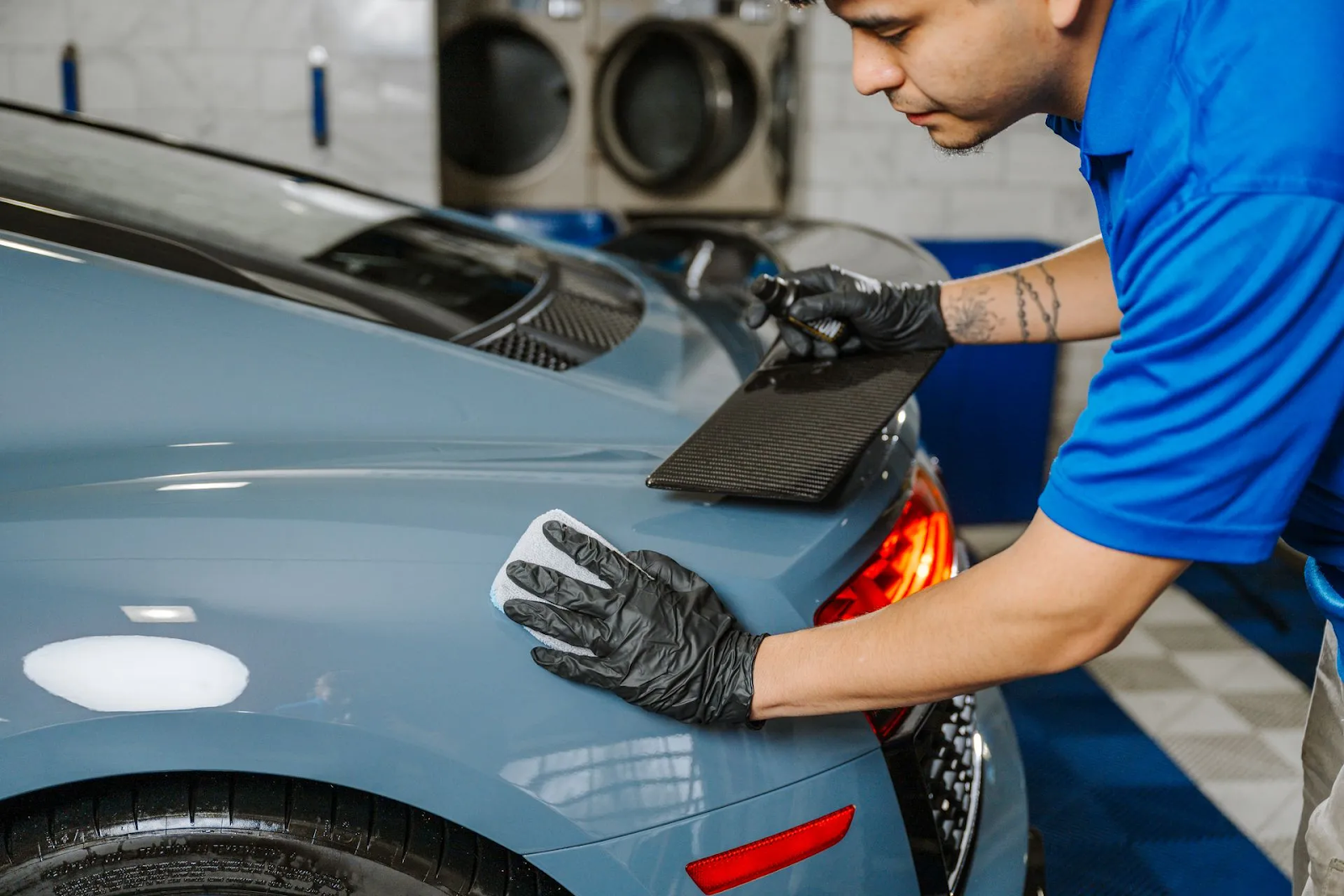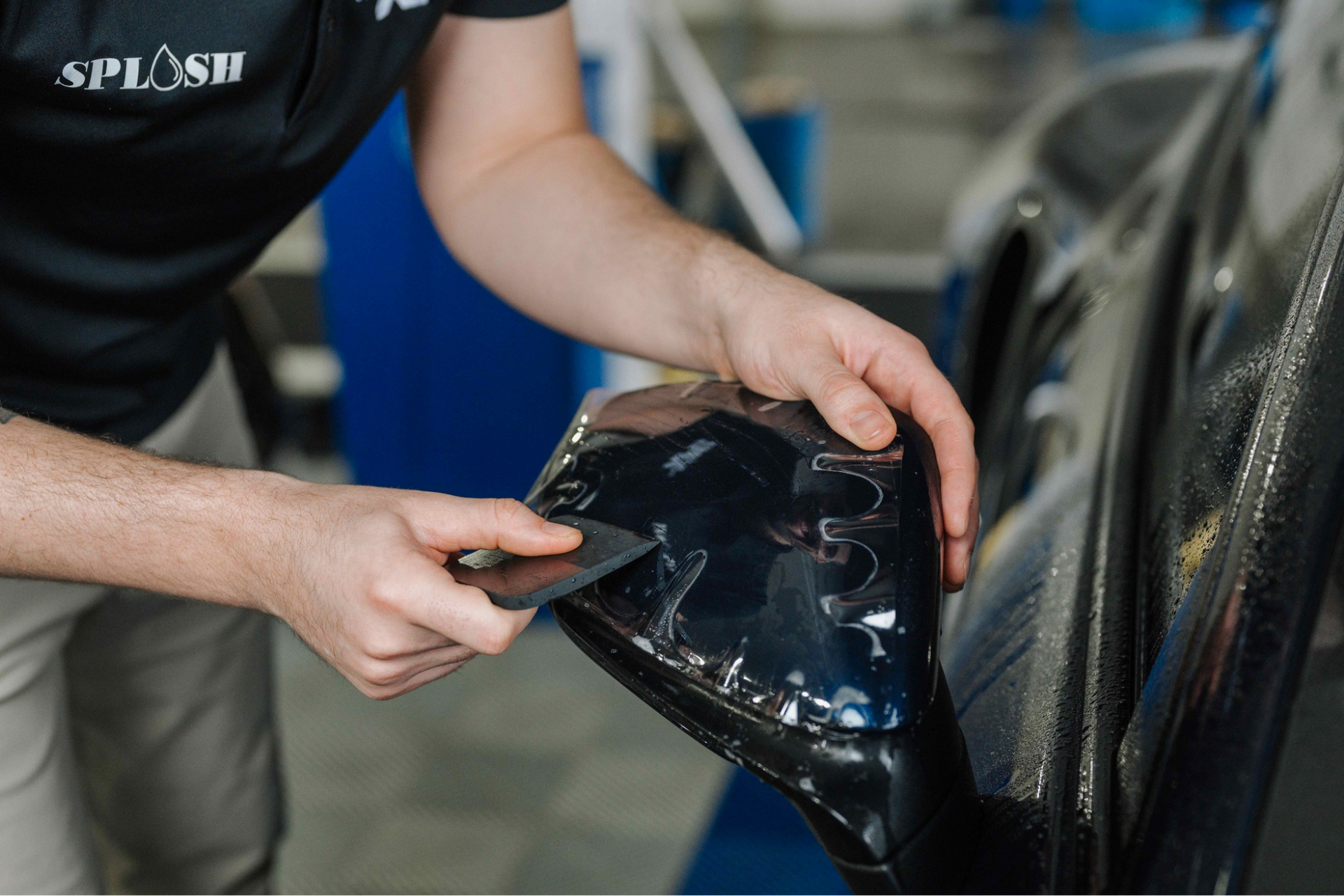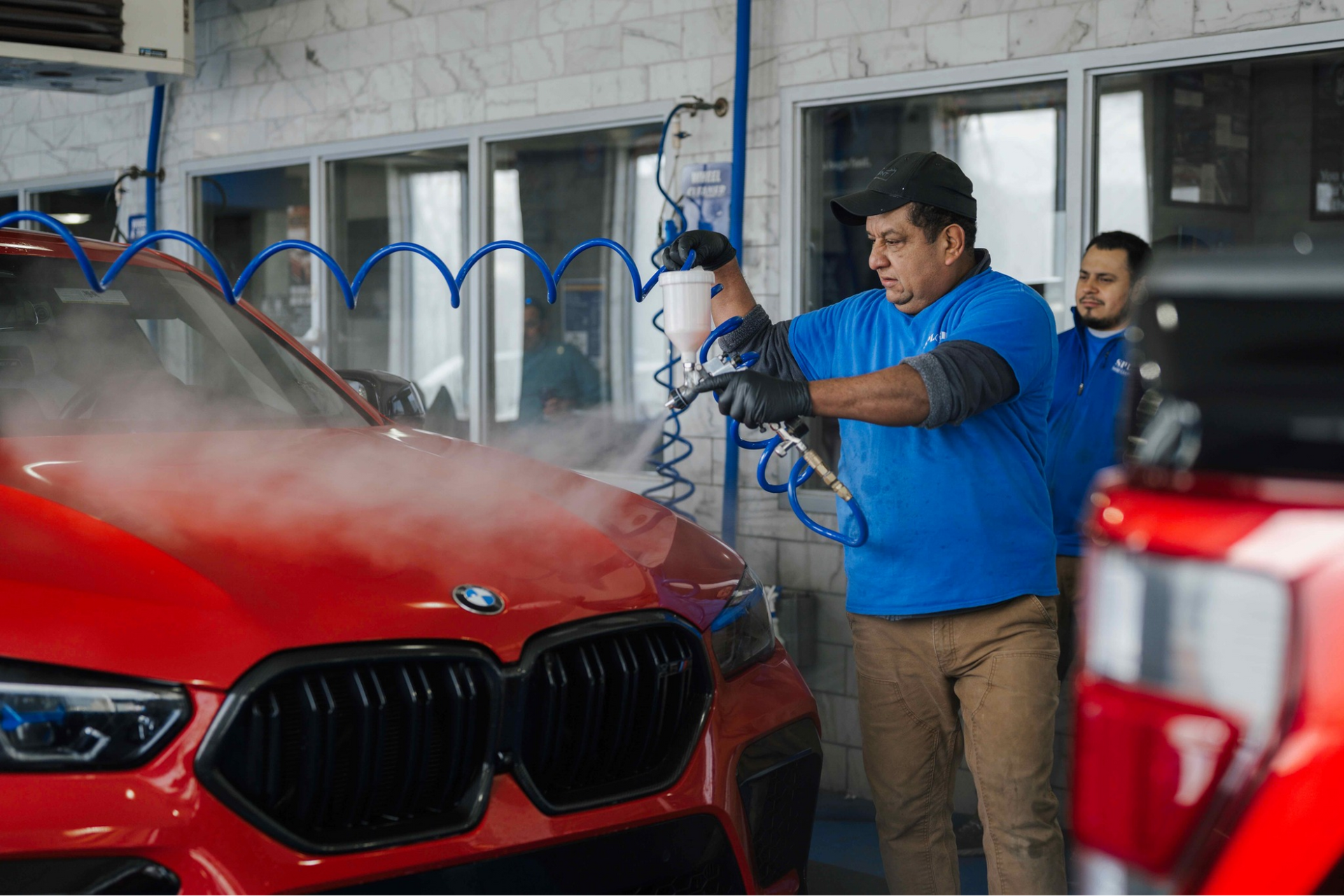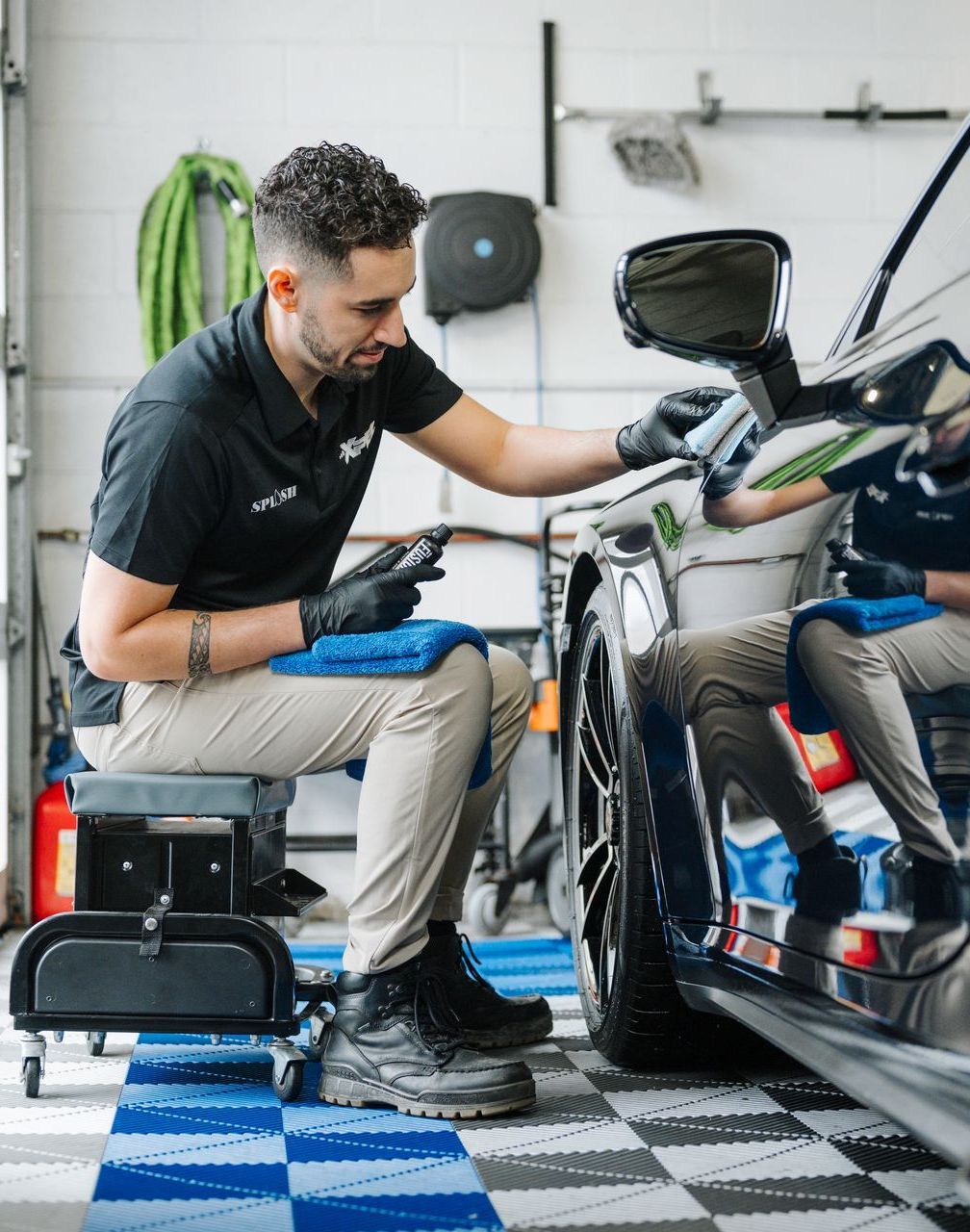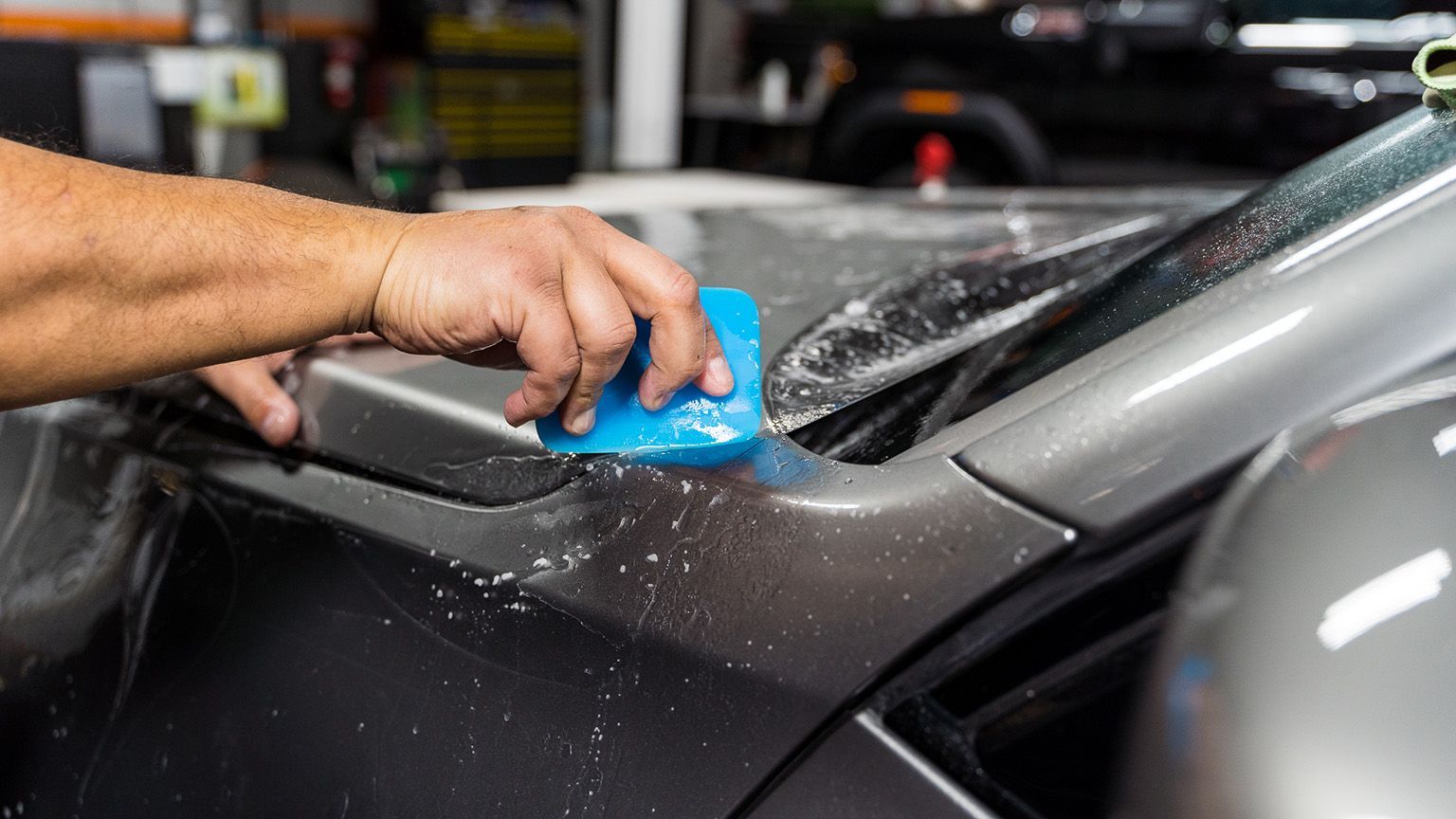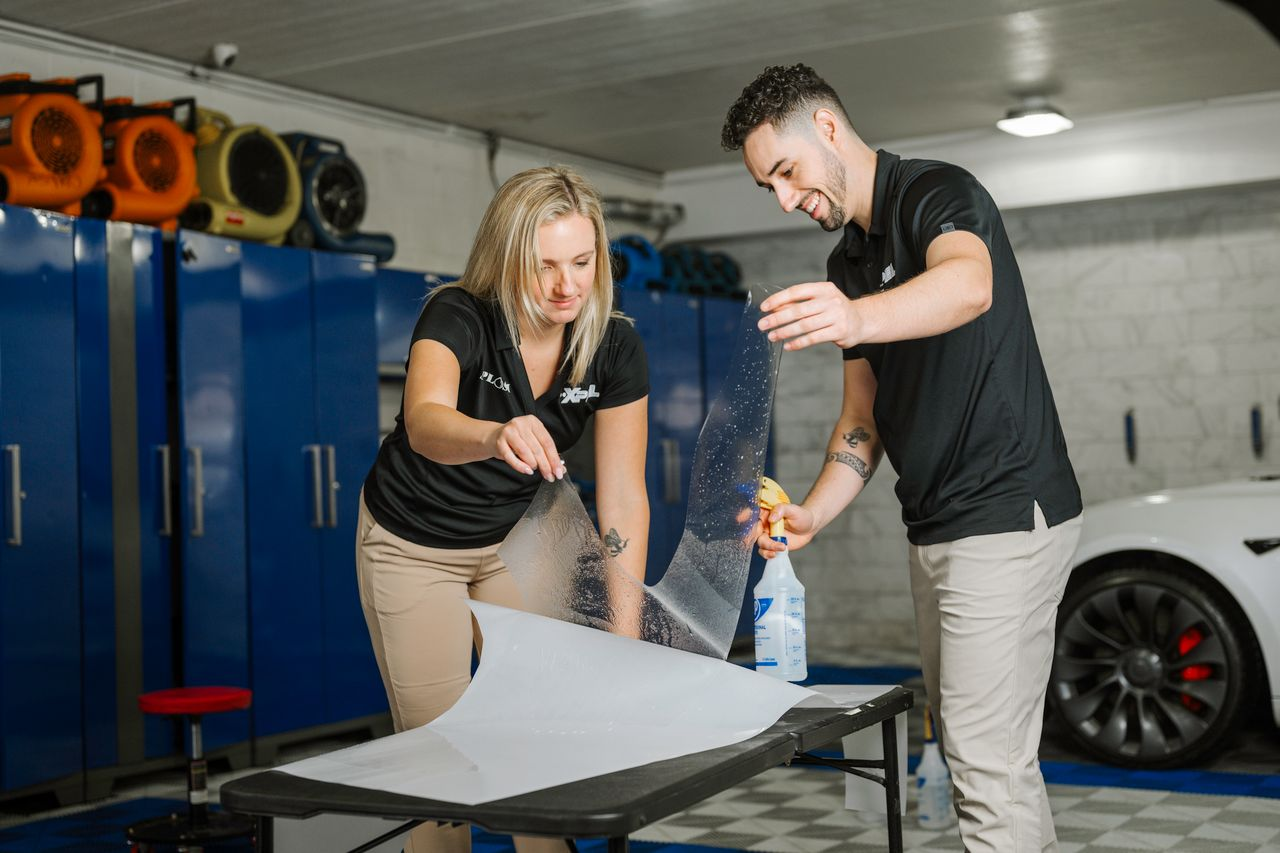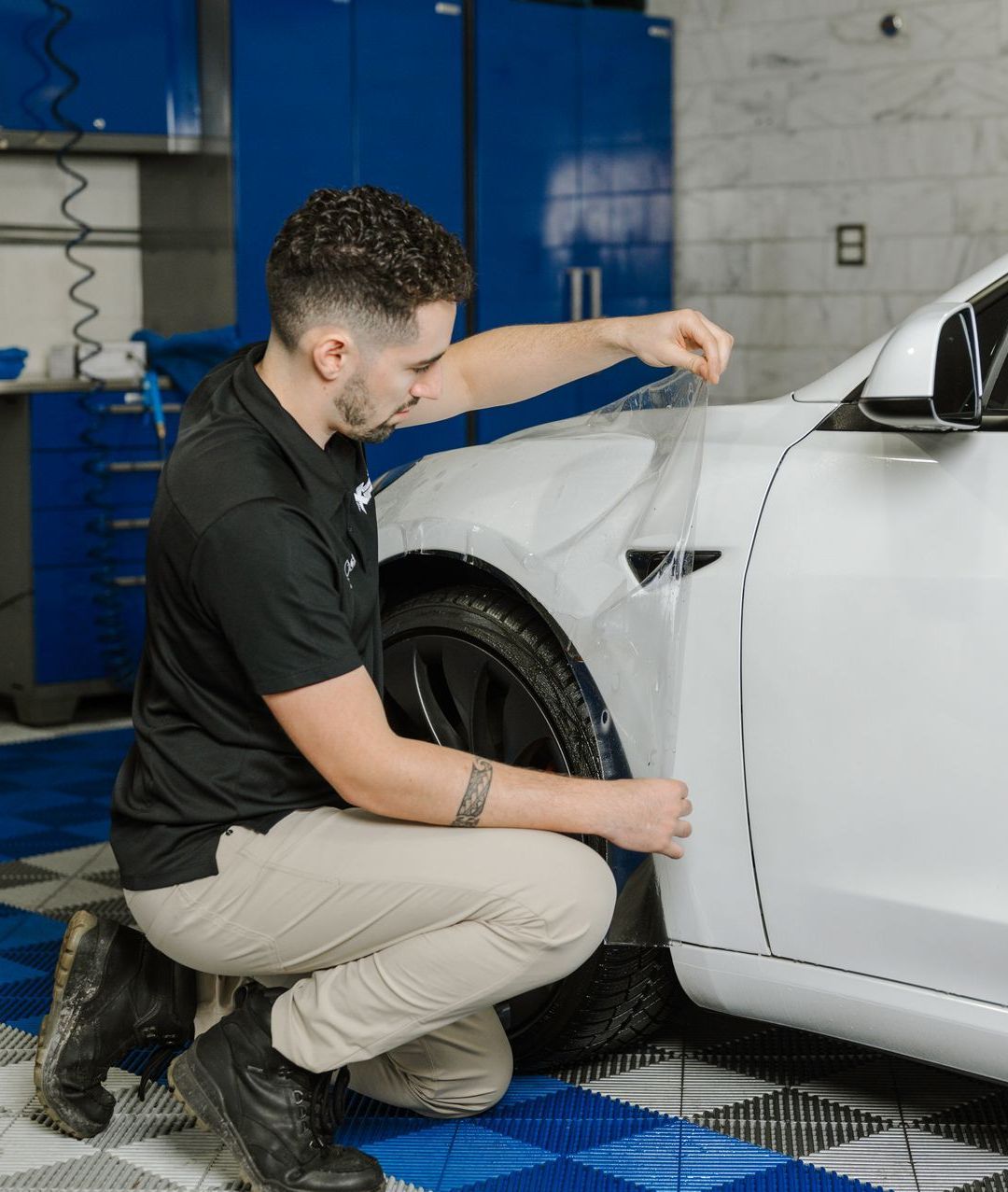More car owners are thinking about their environmental footprint, and if you're considering eco-friendly PPF options, you're probably wondering whether paint protection film is actually good for the planet. It's a fair question, especially when you're trying to make responsible choices about your vehicle maintenance.
The environmental story of eco-friendly PPF isn't as simple as "yes" or "no." Paint protection film uses resources to produce and install, but it also prevents activities that have environmental impacts down the road.
At Splash Hand Car Wash and Detail, we help customers understand the real environmental trade-offs when protecting their vehicles. The truth is that eco-friendly PPF can reduce your car's lifetime environmental impact when you consider what it prevents.
PPF Production - Understanding the Footprint
Let's start with the honest part - producing eco-friendly PPF does have an environmental footprint.
Paint protection film manufacturing involves polymer production, energy consumption during processing, and packaging for transportation. Modern manufacturers work to reduce these impacts, but production requires resources.
The film itself is a polyurethane material that's relatively thin compared to other protective options like multiple paint layers or vinyl wraps.
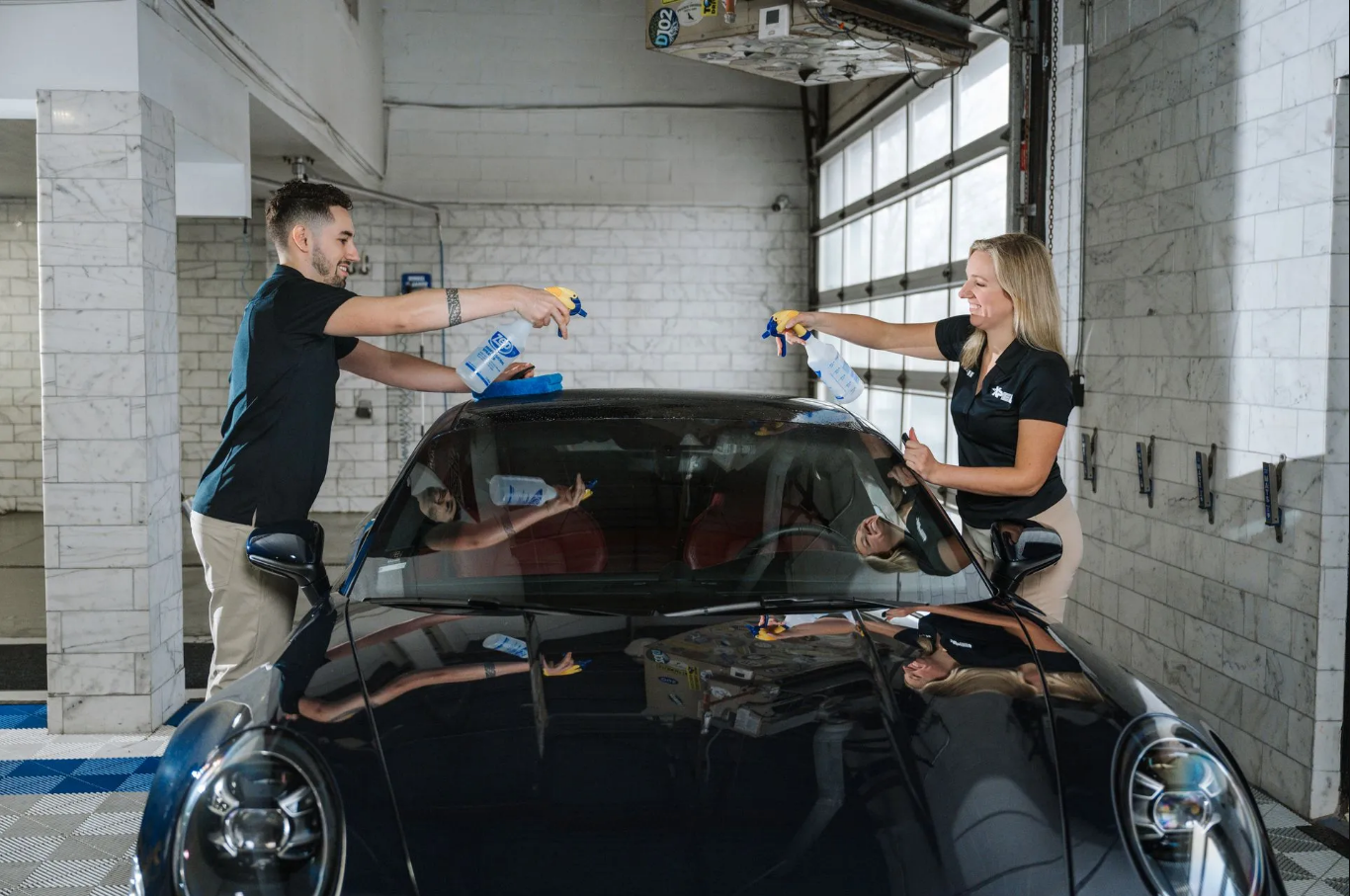
What PPF Prevents - The Real Environmental Benefit
Here's where eco-friendly PPF starts making environmental sense. When you look at what the film prevents over its lifetime, the picture changes.
Protection Against Paint Damage
PPF shields your vehicle from:
- Rock chips and road debris damage
- Environmental contaminants like road salt
- UV rays that fade paint over time
- Bird droppings and bug splatter that can corrode surfaces
- Minor scratches and surface defects
By preventing this damage, PPF helps you avoid environmental costly repair processes later.
Avoiding Repainting
Consider what repainting involves:
- Paint stripping chemicals and processes
- Surface preparation materials
- Multiple coat applications
- High-temperature curing processes
- VOC emissions
- Hazardous waste disposal
If paint protection film prevents even one repaint by preserving your original paint, the environmental benefit becomes significant.
Maintenance Benefits - Less Impact Over Time
Eco-friendly PPF actually reduces your ongoing environmental impact through simpler maintenance needs.
Easier Cleaning Process
PPF-protected vehicles benefit from:
- Hydrophobic properties that repel water and dirt
- Surfaces that are easier to wash and clean
- Less need for harsh cleaning chemicals
- Faster washing that uses less water
The slick finish created by PPF means contamination doesn't adhere as strongly to your vehicle's surface.
Reduced Chemical Usage
With PPF protection, you don't need:
- Frequent wax applications
- Aggressive contamination removers
- Paint correction products
- Multiple cleaning chemicals
This reduction creates ongoing environmental benefits throughout the film's life.
Preserving Original Factory Paint
Maintaining your original factory paint has environmental advantages. Factory paint application happens in controlled environments with better emissions management.
Keeping that original finish intact means:
- No additional paint production
- No body shop energy consumption
- No paint-related waste
- Better vehicle resale value
Well-maintained vehicles with protected paint stay in use longer before replacement. This extended vehicle life helps avoid the enormous environmental impact of manufacturing new cars.
Installation Process at Splash Hand Car Wash and Detail
PPF installation creates a relatively small environmental footprint compared to ongoing alternatives.
The installation at Splash Hand Car Wash and Detail involves:
- Precise surface cleaning and preparation
- Film application using water-based solutions
- Minimal chemical usage
- No high-temperature curing
- Little waste beyond film trimming
The process is completed in a day with no ongoing environmental impact afterward. Our team uses professional-grade products and applies every film with precision and care.
Long-Term Protection Value
Quality PPF provides years of protection from a single installation. This longevity is where the environmental benefits really add up.
Self-Healing Technology
The self-healing properties of PPF mean minor scratches and imperfections repair themselves with heat or sunlight exposure. This technology helps maintain your vehicle's appearance without requiring additional repair work or products.
UV Protection
PPF blocks harmful UV rays that fade and degrade paint over time. This protection helps maintain your vehicle's vibrant color and glossy appearance while preventing oxidation.
Vehicle Value and Longevity
PPF helps maintain your vehicle's resale value by preserving the original paint in pristine condition.
Higher resale value means:
- Vehicles stay in use longer
- Less frequent vehicle replacement
- Reduced manufacturing impact from new car production
- Better return on your vehicle investment
Making the Most Eco-Conscious Choice
If environmental impact concerns you, maximize eco-friendly PPF benefits:
Focus on High-Impact Areas:
- Front bumpers take the most damage
- Hoods face constant road debris
- Mirrors are vulnerable to chips
- Partial coverage prevents major repairs
Choose Quality Installation:
- Professional application lasts longer
- Better results mean fewer replacements
- Precision installation maximizes film life
Match Coverage to Your Needs:
- Heavy road debris exposure increases value
- Daily driving conditions matter
- Urban parking benefits from protection

Why PPF Makes Environmental Sense
When you consider all factors, eco-friendly PPF becomes an environmentally smart choice. The key is comparing it to realistic alternatives.
Most drivers eventually face paint damage requiring correction or repainting. PPF prevents these procedures with one-time installation that protects for years.
Environmental benefits include:
- Water savings from easier washing
- Reduced chemical consumption
- Avoided repainting emissions
- Extended vehicle life
- Original paint preservation
Ready to Make an Informed Decision?
Understanding the environmental impact of eco-friendly PPF helps you make choices that align with your values. While PPF isn't impact-free, it often represents an environmentally responsible way to maintain your vehicle's appearance over time.
Contact us at Splash Hand Car Wash and Detail to discuss how paint protection film can protect your vehicle while supporting your environmental goals.
Frequently Asked Questions
Is PPF better for the environment than regular waxing?
PPF typically has a better environmental profile than years of regular waxing. While PPF has upfront production impact, it eliminates ongoing product consumption, packaging waste, and chemical runoff from frequent wax applications. PPF's one-time installation creates less environmental impact than repeated applications over time.
How does PPF help prevent environmental damage to paint?
PPF blocks harmful UV rays that fade paint, resists corrosive elements like bird droppings and road salt, and protects against rock chips and scratches. By preventing this damage, PPF helps you avoid repainting and paint correction procedures that have significant environmental impacts through chemical usage and energy consumption.
Does PPF make washing more environmentally friendly?
Yes, PPF's hydrophobic properties make washing faster and more water-efficient. Dirt doesn't stick as strongly to the film surface, requiring less water and fewer harsh chemicals to clean. Vehicles stay cleaner longer, reducing overall wash frequency and accumulated environmental impact from cleaning products.
How does PPF installation compare to repainting environmentally?
PPF installation has a much smaller footprint than repainting. Repainting involves chemical stripping, high-temperature ovens, VOC emissions, and hazardous waste disposal. PPF uses minimal chemicals, no high-heat processes, and creates little waste. Preventing even one repaint creates substantial environmental benefit.
What makes PPF installation at Splash Hand Car Wash environmentally responsible?
Our installation process uses water-based solutions, professional-grade products applied with precision, and minimal chemical usage. The process creates little waste beyond film trimming scraps, and the one-time installation provides years of protection without ongoing environmental impact from maintenance products or repair procedures.

